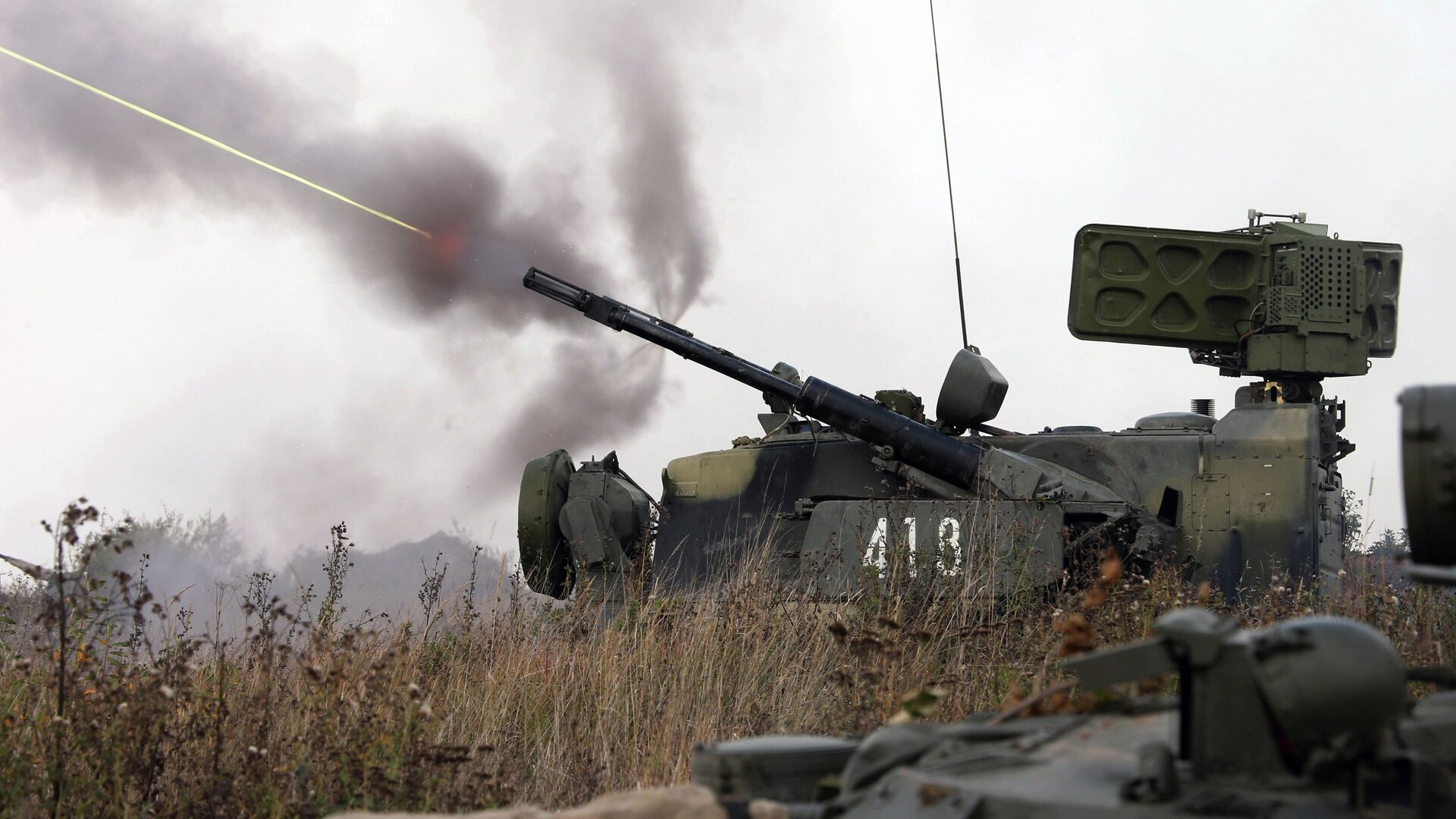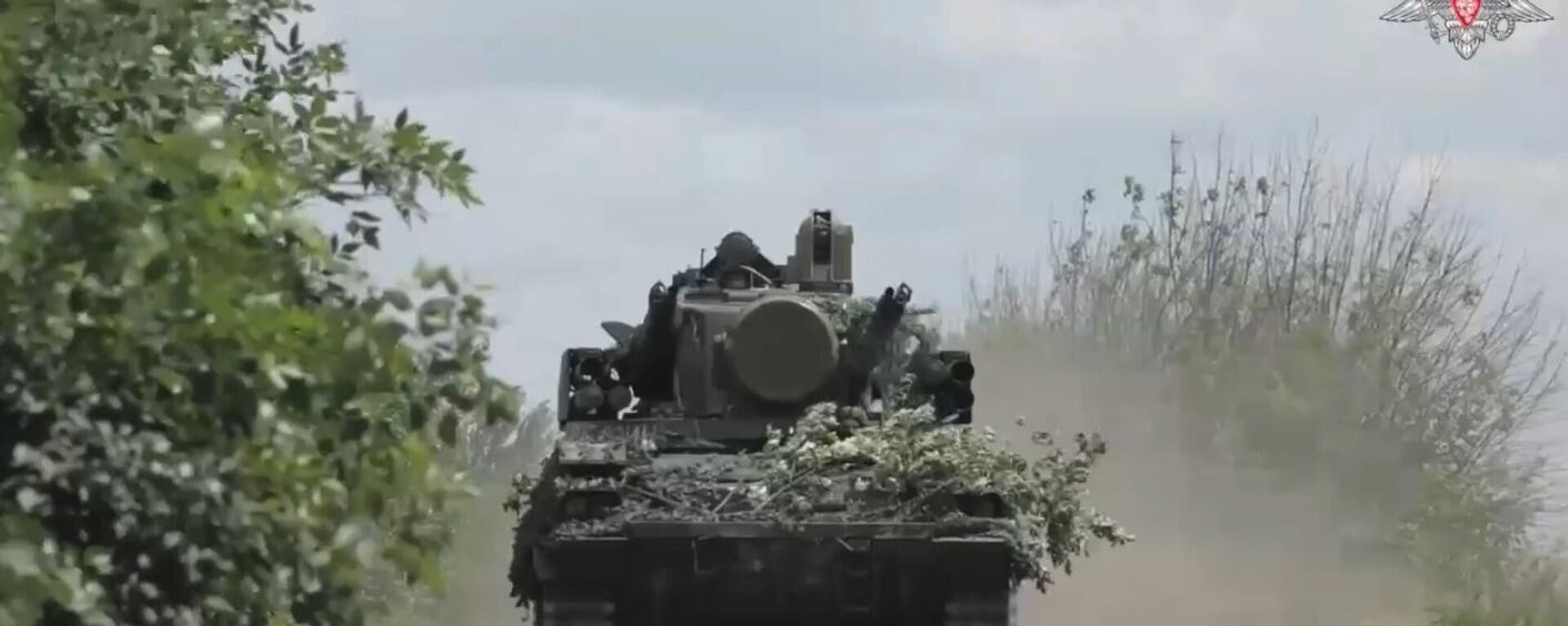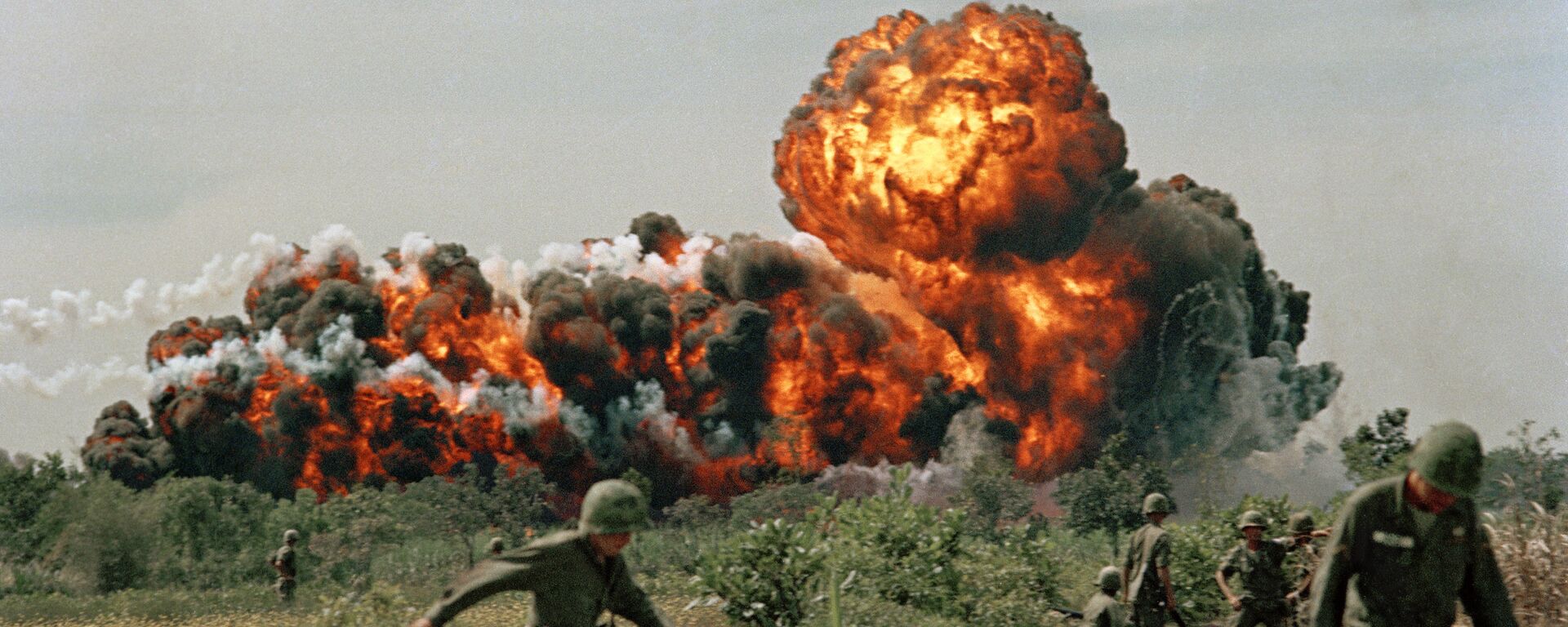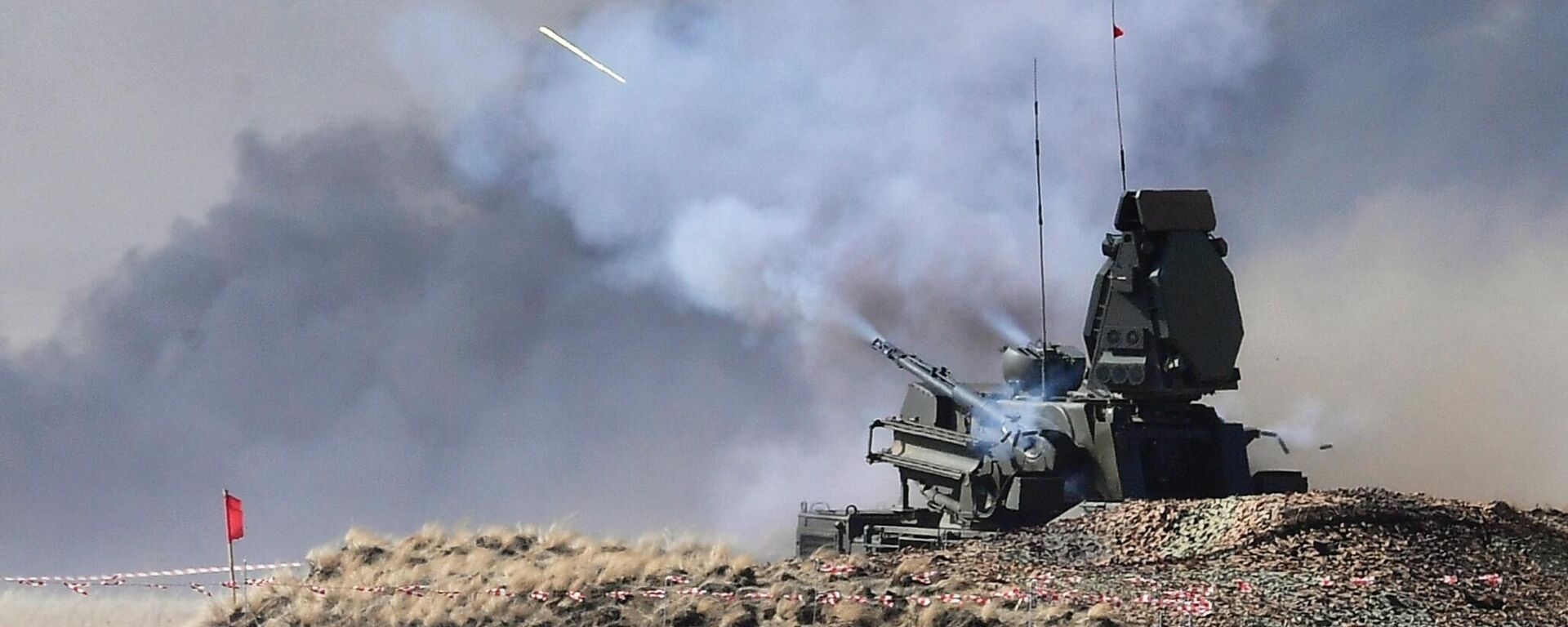What are the Capabilities of Russia's Tunguska Anti-Aircraft System?

© Sputnik / Igor Zarembo
/ Subscribe
The Tunguska-M1 self-propelled anti-aircraft missile and gun system have been shielding the Russian military since the outset of the special military operation in Ukraine. How does the Tunguska work?
The Russian Ministry of Defense on August 10 released footage of the Tunguska-M1 anti-aircraft system destroying a Ukrainian drone in the zone of a special military operation.
The video featured the commander of the Tunguska-M1 air defense missile system with the call sign Santekh: "We are on duty every day, doing combat work on the front lines," he said. "We hit targets with anti-aircraft guided missiles. The striking range is up to ten kilometers, and with anti-aircraft guns we can hit a target up to five kilometers."
The Tunguska system, which originates from the Soviet era, looks quite simple but solves a certain range of routine problems with great efficiency, according to Viktor Litovkin, military analyst and retired colonel.
"There are vehicles that are designed to solve simple tasks, for example, to engage with helicopters, attack aircraft, airplanes that fly at a speed slightly higher than the speed of sound," Litovkin told Sputnik. "[The Tunguska] can also be instrumental against HIMARS. It can also shoot down 'Storm Shadow' or 'SCALP', or the German 'Taurus' missiles. It can also hit unmanned aerial vehicles with its 30-millimeter cannon system. So the Tunguska has a lot of options for using it on the battlefield."
So, what's the Tunguska and what is it capable of?
What are the Capabilities of the Tunguska?
The Tunguska is a tracked anti-aircraft vehicle which is designed to protect troops and facilities from attacks by combat aircraft operating at extremely low, or low and medium altitudes, as well as for firing at lightly armored ground and surface targets. The cover battery usually includes six to eight Tunguska systems.
To ensure the anti-aircraft system's survivability and accuracy the Tunguska is equipped with a modern radar system that provides search, detection, identification, tracking of air targets, issuance of their coordinates to a digital computer system (DSC) and transmission of flight control commands to the missile.
The anti-aircraft system is mounted on a tracked chassis. The vehicle's equipment includes a navigation system, external and internal communications, a surveillance system, as well as anti-nuclear, anti-chemical and anti-bacterial protection. The Tunguska's armored body protects its crew and equipment from the bullets and shrapnel.

Tunguska antiaircraft gun / surface-to-air missile system
© Sputnik / Evgeny Biyatov
/ What Gun Does the Tunguska Use?
The Tunguska is armed with two twin-barrel 30-mm anti-aircraft cannons (2A38); and launchers with a load of 8 anti-aircraft guided missiles (9M311), designed to destroy aircraft and helicopters flying at altitudes from 15 meters to 3,000 meters. The Tunguska could literally create a "wall of fire": in automatic firing mode, the complex releases up to 80 projectiles every second.
What is the Tunguska Top Speed?
The Tunguska's 9M311 anti-aircraft guided missile's maximum speed is 900 m/s; it can engage targets traveling at speeds up to 500m/s.

The military machinery show at the Alabino training ground held as part of the international military-technical forum ARMY-2016
© Sputnik / Evgeny Biyatov
/ What is the Range of the Tunguska Weapon?
The striking range of the Tunguska's twin-barrel cannons is up to 4,000 m, while the system's anti-aircraft guided missiles could hit targets at a distance of up to 10,000 m (10 km).
When Was the it Designed?
The development of the 2S61 Tunguska anti-aircraft system (NATO reporting name SA-19 Grison) was entrusted to the Tula Instrument Design Bureau (KBP) (presently "Design Bureau of Instrument Engineering named after academician A.G. Shipunov") by the Soviet government decree issued on June 8, 1970, and aimed at replacing the lightly armored self-propelled, radar-guided anti-aircraft complex Shilka with a more powerful weapon.
Despite proving efficient during the Middle East combat operations in the 1960s, the Shilka vulnerabilities had also been exposed, including a short striking range (no more than 2 km), the unsatisfactory power of projectiles, and missed air targets due to untimely detection.
Besides the Mideast experience, Soviet designers also took into account the lessons of the Vietnam War. During that conflict the US started to use helicopters armed with anti-tank guided missiles (ATGMs): American helicopters approached tanks units, hit them with the ATGMs, and then flew away.
In order to protect tanks and infantry from chopper raids and other aircraft, Soviet designers armed the Tunguska with a 30 mm caliber cannon (instead of 23 mm) as well as multiple rockets and equipped the system with improved radars and better armor. As a result, the 2S61 Tunguska became capable of providing reliable protection for the motorized infantry and tank units on the march.

A Tunguska antiaircraft artillery/surface-to-air missile system of an air defense unit from a Western Military District all-arms formation takes part in a tactical exercise at the Kapustin Yar firing range in the Astrakhan Region
© Sputnik / Kirill Braga
/ The Soviet Army adopted the 2S61 Tunguska in 1982. Since then the anti-aircraft system has undergone several upgrades. The latest version of the Tunguska-M1 has two cannons and eight anti-aircraft-guided missiles with a common radar system. Two 30mm 2A38M autocannons together fire a record 5,000 rounds per minute and are capable of literally cutting an aircraft into pieces.
When asked what modifications of the Tunguska he considers the most important retired Colonel Litovkin responded:
"First of all, this is an update of the Tunguska electronic computer system, the improvement of the radar complex, and the optical-mechanical complex. These upgrades increased the Tunguska's striking range and the accuracy of hitting the target."
How Ukraine Conflict Could Help Make the Tunguska More Effective?
Russian designers have gained a lot of experience during the Ukraine conflict which involves a large-scale use of NATO-grade weaponry. Purportedly, the Tunguska would undergo further modifications as NATO's proxy war with Russia unfolds, according to Sputnik's interlocutor.
Still, he believes that it's more likely that the Russian defense industry would focus on the improvement of more sophisticated anti-aircraft weapons, such as the Pantsir S-1 missile system (NATO reporting name SA-22 Greyhound) which is the successor to the Tunguska M1.
"Russia began to use the Tunguska during the special military operation, because we have a lot of them in service," the retired colonel explained. Per him, it's more rational to use the Tunguska instead of the Pantsir S-1, especially given that the Tunguska is quite popular with Russian gunners.
As per Litovkin, weapons should be used rationally without excessive waste of money.
"For example, T-62 tanks are used during the special military operation [in Ukraine]. The question is: Why do we use it? Because it is old and effective enough to solve the problems that may arise during the special military operation," the expert highlighted.
Despite the Russian Armed Forces having adopted the Pantsir-S – the Tunguska's successor – the Russian military does not plan to remove the Tunguska from service. The Soviet-era system has proven to be a highly effective "workhorse", convenient and almost irreplaceable, according to military analysts.





